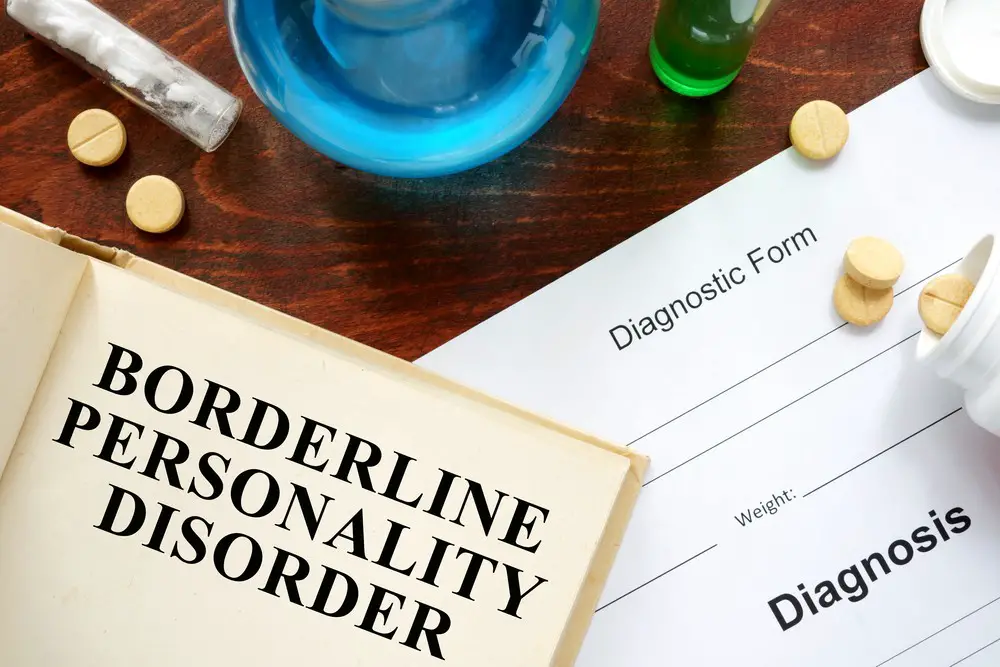Saying no to someone with borderline personality disorder (BPD) can be challenging, especially when you share a close relationship. Individuals with BPD may exhibit intense emotions, a fear of abandonment, and impulsive behaviors, making it challenging to maintain healthy boundaries. However, setting limits and understanding how to say no assertively is essential in fostering a balanced and productive relationship.
Developing effective communication strategies and maintaining a balance between empathy and boundaries is crucial to navigating the complexities of saying no to someone with BPD. Recognizing the significance of open dialogue, seeking professional help when necessary, and taking care of your mental and emotional well-being are all integral aspects of successfully interacting with a person with BPD.
Key Takeaways
- Saying no is essential in maintaining healthy boundaries with someone with BPD
- Effective communication and empathy play significant roles in navigating relationships with BPD individuals
- Self-care, professional help, and therapy options may be necessary for achieving a balanced and productive relationship
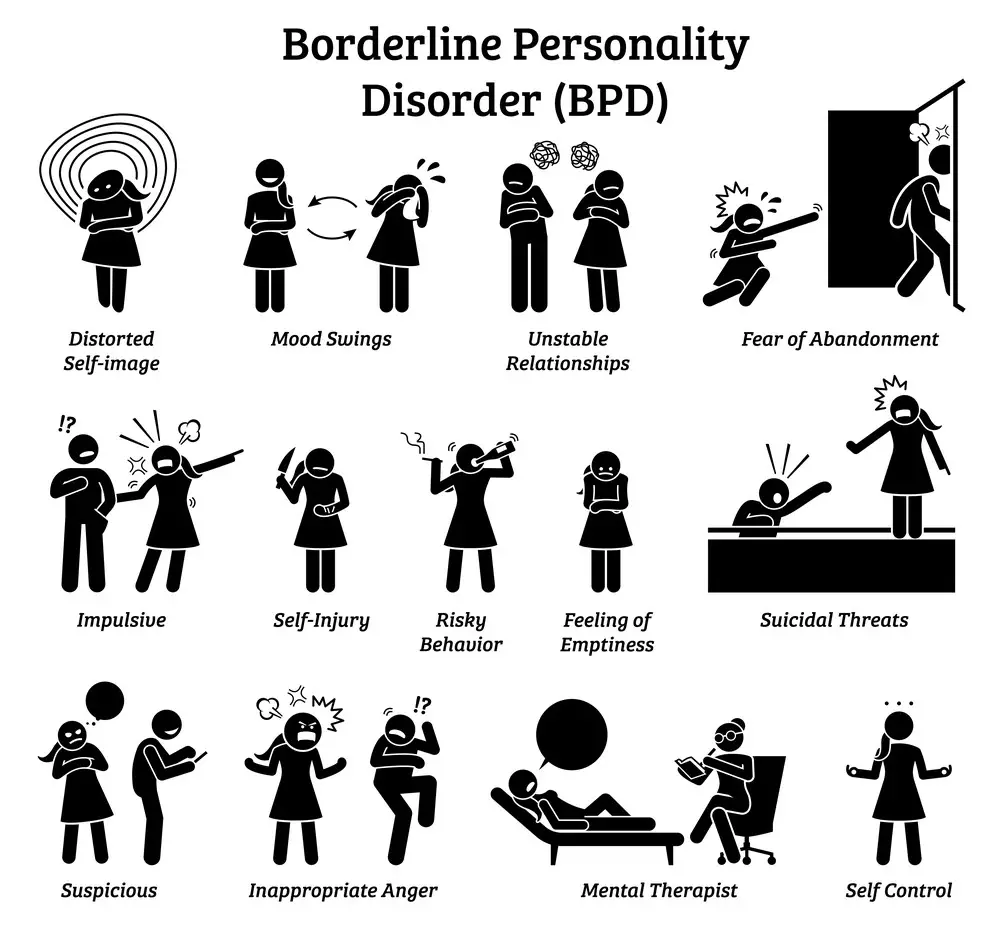
Understanding Borderline Personality Disorder
Borderline Personality Disorder (BPD) is a mental health condition characterized by emotional instability, impulsivity, and chronic feelings of emptiness. It may cause a person to experience intense emotional volatility, extreme mood swings, and emotional dysregulation, leading to self-harm, depression, and strained relationships with others.
People with BPD can struggle with emotional dysregulation, which means they have difficulty managing their emotions. You might notice that they go through BPD episodes, during which they experience a surge of negative emotions and have difficulty controlling their reactions. These episodes can be challenging for individuals with BPD and those around them.
Some key features of BPD include:
- Emotional instability: Rapid mood swings and difficulty maintaining a consistent emotional state.
- Impulsivity: Making hasty decisions without considering the consequences.
- Self-harm: Engaging in self-destructive behaviors, such as cutting or substance abuse.
- Chronic feelings of emptiness: A pervasive dissatisfaction or lack of fulfillment in life.
When interacting with someone with Borderline Personality Disorder, it’s essential to remember that their behaviors and reactions are often driven by deep-seated emotional pain. By understanding the symptoms and challenges related to BPD, you can better support and communicate with those affected by it. Remember, a little empathy can go a long way in maintaining a healthy relationship with someone with BPD.

Common Issues in Relationships with BPD
Interpersonal relationships, particularly romantic ones, can be challenging when someone has borderline personality disorder (BPD). BPD is marked by emotional volatility, fear of abandonment, and intense reactions that can make establishing a healthy relationship difficult. Let’s discuss some common issues BPD poses in relationships and how to manage them effectively.
- Unstable relationships: Individuals with BPD often experience unstable relationships, characterized by highs and lows. You may find your partner frequently shifting between adoration and disdain. This unpredictability can make establishing trust in the relationship a challenge.
- Trust issues: Speaking of trust, BPD can cause people to struggle with trusting others and themselves. If your partner has BPD, they may constantly seek reassurance and struggle to feel secure.
- Intense emotions: BPD can make people experience emotions more intensely than others, leading to strong reactions to positive and negative stimuli. As their partner, it’s essential to be understanding and supportive while maintaining consistent boundaries.
- Fear of abandonment: People with BPD often have a deep-seated fear of abandonment, which can cause clinginess or an unwillingness to commit. This can significantly strain the relationship and lead to co-dependency or abuse.
To successfully navigate a relationship with someone who has BPD, it’s essential to approach these issues with empathy and patience. Recognize the person you care about is struggling, and work together to establish clear boundaries and open communication. Maintaining consistency and understanding can help foster a more stable and healthy relationship.
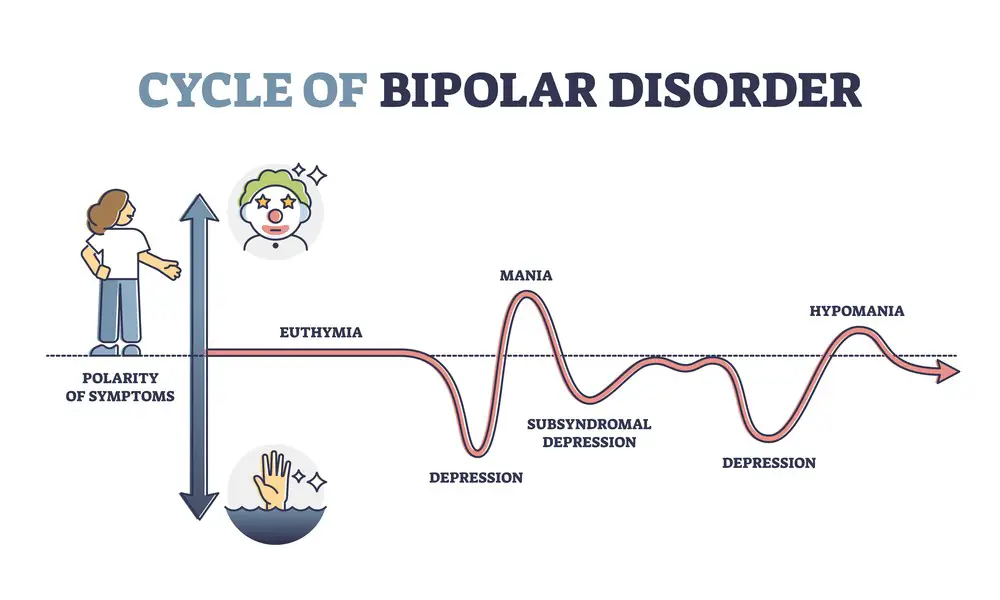
The Importance of Saying No
Setting boundaries is crucial when dealing with someone with borderline personality disorder (BPD). Saying no is a vital part of establishing those boundaries. It helps maintain a healthy relationship and prevents you from being overwhelmed or manipulated.
People with BPD often struggle with a fear of abandonment and rejection. While giving in to their requests may be tempting, remember that saying no is essential for their emotional growth. By reinforcing consistent boundaries, you’re not only looking after your well-being, but you’re also helping them learn how to cope with setbacks and disappointments.
Avoiding over-the-top reactions can be challenging when saying no to someone with BPD. They may become emotional, guilt-trip you, or display extreme rage or despair. Remember that maintaining calm and standing firm in your decision will benefit you and the person with BPD.
Here are some tips for effectively saying no:
- Practice empathy by acknowledging their emotions while maintaining your position.
- Use clear and concise language to avoid confusion.
- Be consistent in your behavior and in enforcing your boundaries.
- Offer an alternative or compromise when possible.
Remember, saying no to someone with BPD might not always be easy, but it is crucial for your well-being and theirs. Stay strong, and prioritize open communication and healthy boundaries in your relationship.
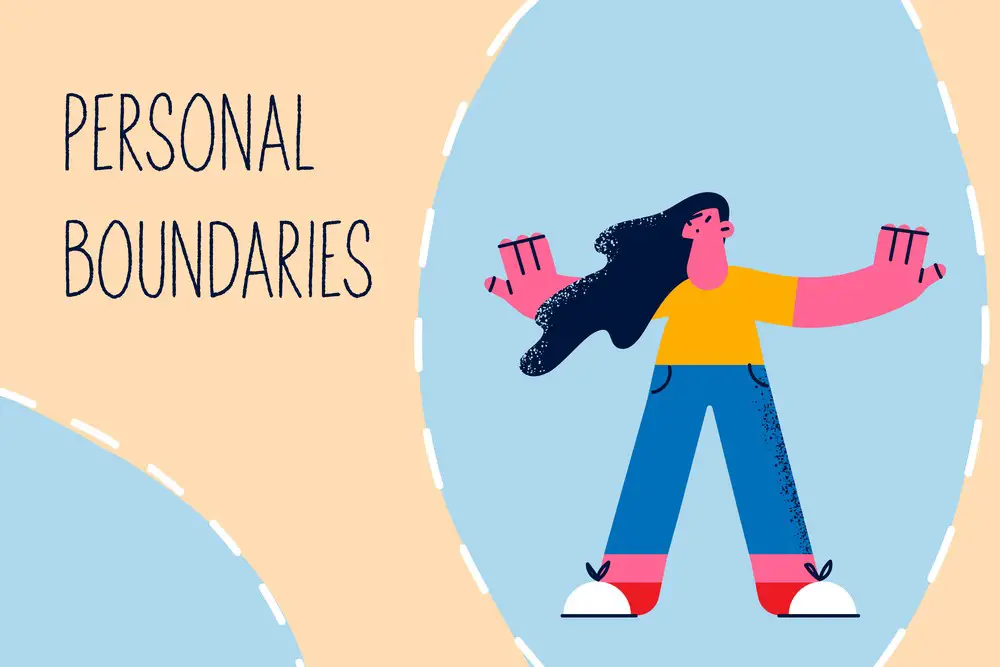
Balancing Empathy and Boundaries
When dealing with someone with borderline personality disorder (BPD), it’s crucial to balance empathy and setting healthy boundaries. You can work towards a more stable relationship by showing understanding of the individual’s struggles while asserting yourself with respect.
Empathy plays a key role in communicating with someone with BPD. Remember, they often experience intense emotions and fear of abandonment. You can create a safe space for them by acknowledging their feelings and offering support. This does not mean you must agree with their perceptions but empathize with their experiences.
Here are some tips to demonstrate empathy:
- Actively listen to their feelings without judgment
- Use empathetic statements, like “I understand how you might feel that way.”
- Validate their emotions, even if you don’t necessarily agree with their perspective
While empathy is essential, setting boundaries is equally crucial to maintaining a healthy relationship. Boundaries protect you and the person with BPD from emotional burnout or potential harm.
Consider these strategies for setting boundaries:
- Be clear and consistent about your limits
- Use “I” statements to express your needs, like “I need some space to process my own feelings.”
- Avoid making grand promises that might be hard to keep
When you have to say no to someone with BPD, remember to:
- Stay calm and assertive
- Acknowledge their feelings before asserting your own
- Reinforce your boundaries even if they become upset
Combining empathy and healthy boundaries creates a supportive environment that helps both parties navigate the challenges of BPD. You can build a more stable, fulfilling relationship by balancing understanding and self-preservation.

Effective Communication Strategies
When interacting with someone with borderline personality disorder (BPD), it’s essential to establish effective communication strategies to maintain a healthy relationship. Here are some key recommendations to achieve this goal:
Validate their feelings
First and foremost, try to understand and validate the emotions of your friend or family member with BPD. Listen to their concerns and acknowledge their feelings without passing judgment. Show empathy by saying things like “I understand why you feel that way” or “It must be difficult to deal with that situation.”
Choose your words carefully
Communication with someone with BPD can be delicate, so choose your words carefully. Avoid statements that might be seen as accusatory or critical. Instead, opt for open, nonjudgmental language that promotes healthy discussion. For example, use “I” statements to express your feelings, like “I feel uncomfortable when…” rather than saying “You always…”.
Practice active listening
When communicating with someone with BPD, practicing active listening is crucial. This means giving them your full attention, maintaining eye contact, and providing verbal or nonverbal cues like nodding to show you hear and understand them. Reflecting on what they said can further demonstrate your comprehension, such as “So, you’re feeling overwhelmed because of…”.
Establish boundaries and compromise
Establishing clear boundaries with individuals with BPD is essential. Be upfront when explaining your limits, and be prepared to compromise when necessary. Find a common ground, and express your love and support while maintaining your well-being.
Remember, communication is an ongoing process. By validating their feelings, being careful with your words, practicing active listening, and establishing boundaries with compromise, you can create a supportive and understanding environment that fosters healthy relationships with individuals diagnosed with BPD.
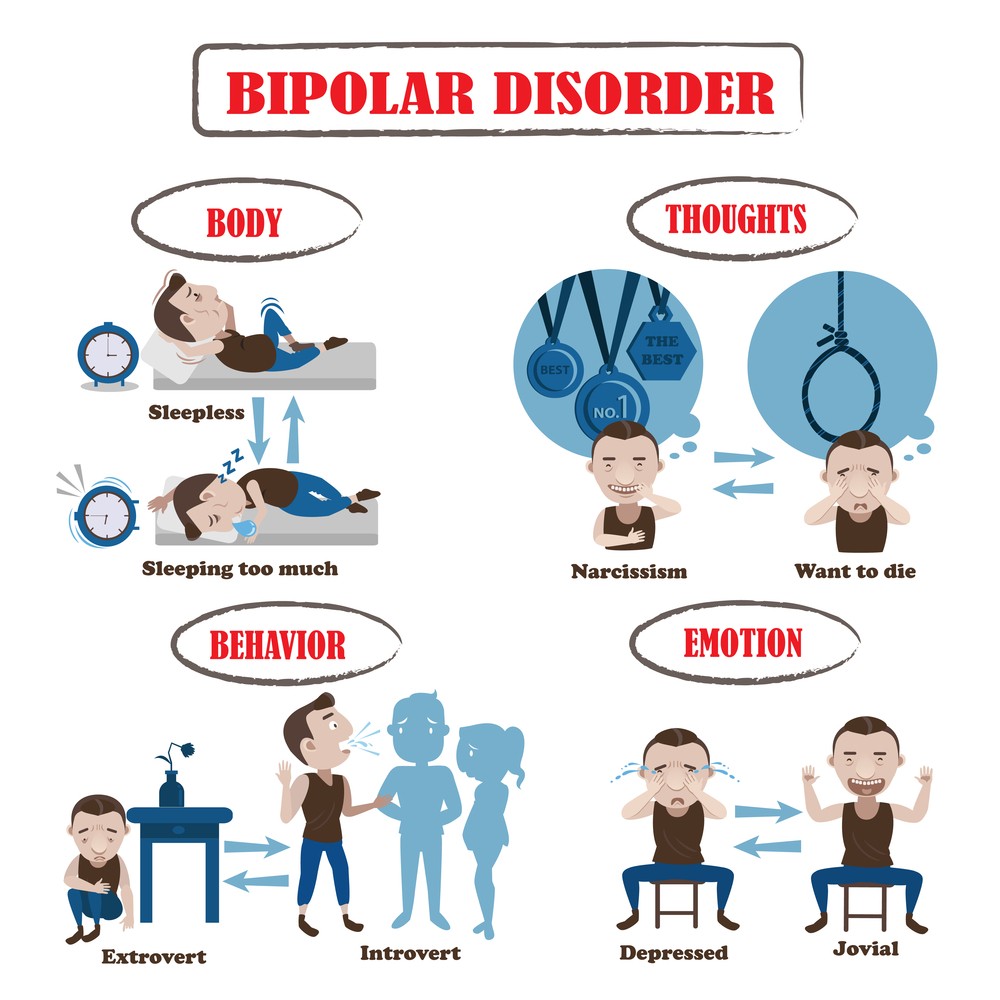
Dealing with Negative Reactions
When saying no to someone with borderline personality disorder (BPD), be prepared for possible intense emotional reactions. They might feel rejection, anger, resentment, and fear of abandonment. This section will guide you in managing these responses.
First, try to maintain a calm demeanor. Responding to extreme mood swings with anger will only escalate the situation. You can try deep breaths, grounding techniques, or finding a temporary distraction to stay composed. Remember, protecting yourself emotionally is essential, so focus on your well-being.
Next, use empathic listening to validate their feelings. Say something like, “I understand that you’re upset” or “I see that you’re frustrated.” Acknowledging their emotions can help lessen their anger, making them feel heard and respected.
It’s essential to establish boundaries and be firm about your decision. Although their emotional reactions might evoke guilt, remind yourself that you can decline requests or set limits. Be assertive but kind: use phrases like “I care about you, but I can’t do that” or “I need to focus on my own needs right now.”
Identifying possible triggers can also be beneficial. Some common triggers for those with BPD include perceived criticism and abandonment. Awareness of these issues may help you avoid triggering their strong emotional responses.
Here are some tips to remember while dealing with adverse reactions:
- Stay calm and composed
- Use empathic listening to validate their feelings
- Establish boundaries and be firm in your decision
- Identify potential triggers and avoid them, if possible
You mustn’t take their reactions personally when interacting with someone with BPD. Remember that these responses are often rooted in a fear of abandonment or rejection. You’ll better manage negative reactions by staying composed, validating emotions, and establishing boundaries.
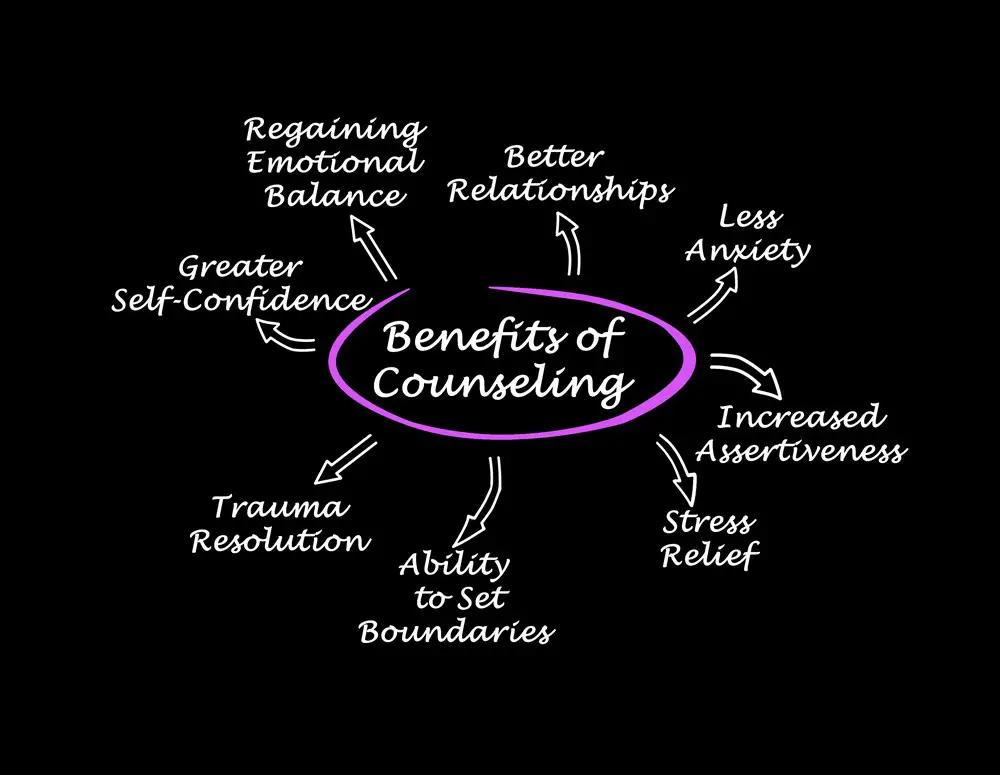
Professional Help and Therapy Options
Managing a relationship with someone with Borderline Personality Disorder (BPD) can be daunting. However, various therapy options and professional help are available for your loved one. Encouraging them to seek assistance may make a difference in how they handle their emotions and interact in relationships.
Dialectical Behavior Therapy (DBT) is a widely recognized and recommended therapy for BPD. This approach, developed specifically for BPD, focuses on helping individuals manage their emotions and reactions more effectively. DBT combines individual therapy, group skills training, and phone coaching to support and develop skills across various aspects of an individual’s life. By suggesting that they explore this therapy option, you’re offering a constructive avenue for self-improvement.
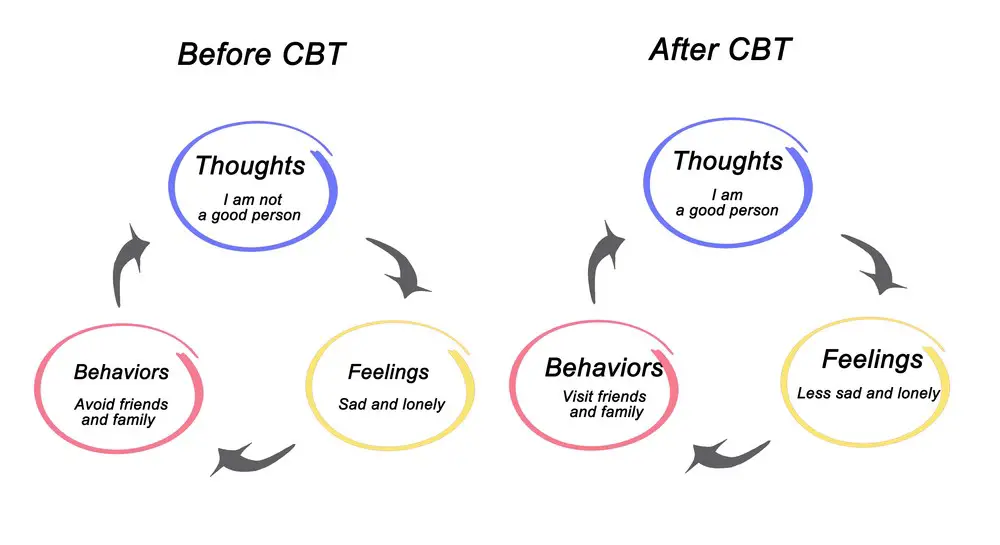
Another therapy approach is Cognitive Behavioral Therapy (CBT). While not designed explicitly for BPD, CBT focuses on identifying and changing problematic thought patterns, providing tools to manage emotions better, and ensuring healthier responses to various triggers. It’s an excellent option for individuals looking to work on specific issues in their relationships or lives.
Moreover, consider exploring psychotherapy options focusing on understanding underlying emotions and thought processes that drive BPD symptoms. Psychotherapy is suitable for someone who desires a deeper exploration of their emotions and the root causes of their behavior.
- Support groups can allow individuals with BPD to share their experiences with others in the same boat. These groups offer a safe space to ask questions, discuss challenges, and seek advice. Encourage your loved one to join such a group, creating a support network to aid their recovery journey significantly.
To sum it up, suggesting therapy and professional help to someone with BPD is a way to show your care and support. Discussing therapy options like DBT, CBT, psychotherapy, and support groups equips them with tools to manage their emotions and improve their relationships. Remember, a little encouragement can go a long way in helping someone on their path to recovery.
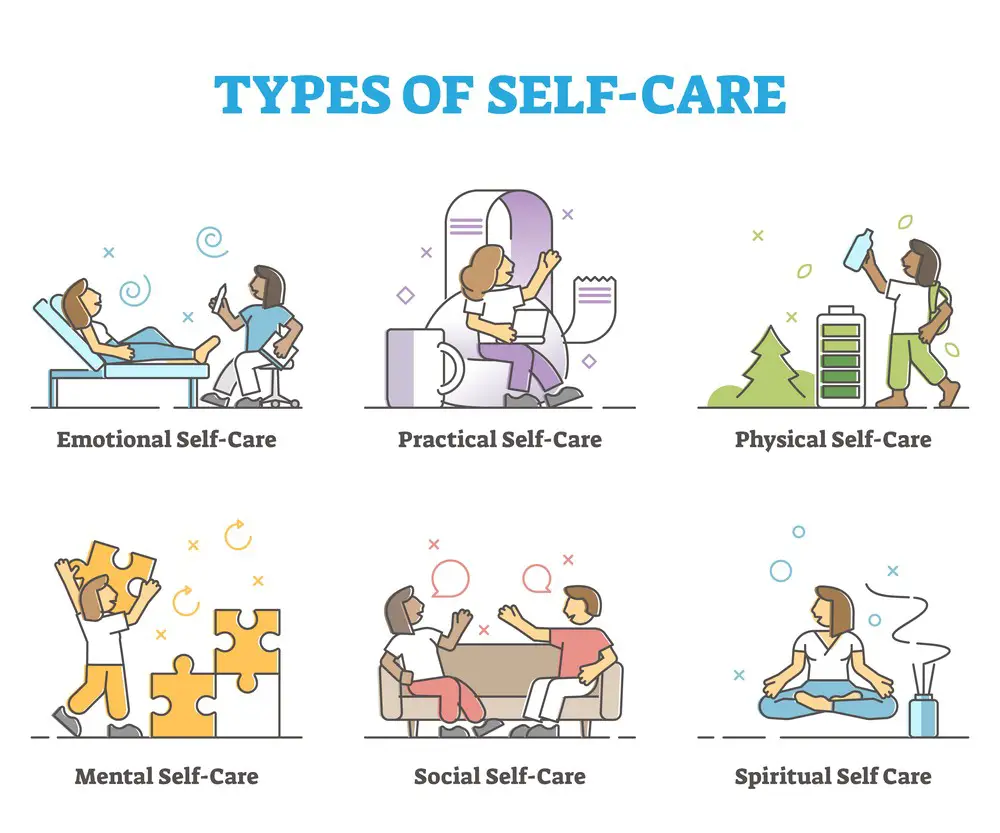
Self-Care for Individuals Involved
When you’re involved with someone who has borderline personality disorder (BPD), it’s crucial to prioritize your own self-care and emotional well-being. Taking the time to focus on your needs will help you maintain a healthy relationship with the person with BPD and protect your well-being in the long run.
First things first, remember that self-care is not selfish. It’s okay to prioritize your own needs, and it’s essential to maintain your own wellbeing. Taking care of yourself will enable you to support the person with BPD better and manage any challenges that might arise.
Creating a well-balanced routine is vital to maintaining your emotional, mental, and physical health. Make sure to include activities that bring you joy and relaxation, such as:
- Regular exercise
- Spending time in nature
- Practicing mindfulness or meditation
- Engaging in hobbies and interests
- Connecting with supportive friends and family
Addressing any feelings of exhaustion or burnout is vital to your self-care journey. Be honest about your emotional capacity and establish boundaries to prevent becoming overwhelmed. Some strategies to prevent and manage exhaustion include:
- Prioritizing sleep and rest
- Seeking therapy or counseling
- Participating in support groups for friends and family of people with BPD
- Practicing stress-relieving techniques like deep breathing exercises or yoga
Lastly, don’t hesitate to reach out for professional help if needed. A mental health professional can offer valuable guidance and support for you and your loved one with BPD. By caring for your emotional well-being, you’re creating a healthier and more stable environment for yourself and the person you care about.
Conclusion
In managing relationships with someone diagnosed with Borderline Personality Disorder (BPD), finding a balance between being supportive and maintaining your well-being is essential. You can create a healthier dynamic by establishing clear boundaries, communicating openly, and challenging guilt and shame.
While it’s important to empathize with the intense emotions faced by those with BPD, remember that it’s also crucial to prioritize your mental health. You have the right to assert your boundaries, even when challenging. Remain committed to setting limits and saying no when necessary, as it will ultimately benefit both you and the person with BPD.
In your interactions, offer reassurance while staying consistent with your boundaries. Validate their feelings without enabling unhealthy behavior. This will help build trust and strengthen your relationship, making it easier to navigate difficult conversations in the future.
Some takeaways to bear in mind include:
- Be open and transparent in your communication
- Validate their emotions while maintaining your boundaries
- Stay consistent, even during difficult situations
- Prioritize your well-being
Remember, finding the right balance takes time and practice. Maintain a friendly, supportive tone while asserting your needs and nurturing a healthier relationship with someone with Borderline Personality Disorder.

Signs That Therapy is Needed
Sometimes, it’s difficult to determine when professional help is required, especially in emotionally charged relationships with people with BPD. Here are some signs that therapy might be beneficial:
- Recurrent Conflicts: If arguments and conflicts become a regular feature, it’s a red flag.
- Emotional Exhaustion: Feeling constantly drained or overwhelmed can signal that you need external support.
- Boundary Violations: If you find it increasingly hard to maintain your boundaries, it might be time to seek professional guidance.
- Isolation: When a relationship affects your other relationships or social life negatively.
- Escalating Behavior: Noticing escalating or increasingly risky behaviors in your loved one with BPD.
Goals for Therapy
Therapy can be vital for maintaining a balanced relationship with someone with BPD. Here are some goals you might aim to achieve:
- Improved Communication: Learning how to express your needs and boundaries more clearly.
- Emotional Regulation: Both parties could benefit from strategies to manage emotional responses effectively.
- Conflict Resolution: Developing tools to resolve conflicts more healthily.
- Enhanced Empathy: Understanding the emotional needs of both parties can lead to a more balanced relationship.
- Self-Care Techniques: Equipping yourself with self-care strategies is crucial for your well-being, too.
Signs That Therapy is Needed
Sometimes it’s difficult to determine when professional help is required, especially in emotionally charged relationships with people who have BPD. Here are some signs that therapy might be beneficial:
- Recurrent Conflicts: If arguments and conflicts become a regular feature, it’s a red flag.
- Emotional Exhaustion: Feeling constantly drained or overwhelmed can signal that you need external support.
- Boundary Violations: If you find it increasingly hard to maintain your boundaries, it might be time to seek professional guidance.
- Isolation: When a relationship affects your other relationships or social life negatively.
- Escalating Behavior: Noticing escalating or increasingly risky behaviors in your loved one with BPD.
Goals for Therapy
Therapy can be vital for maintaining a balanced relationship with someone with BPD. Here are some goals you might aim to achieve:
- Improved Communication: Learning how to express your needs and boundaries more clearly.
- Emotional Regulation: Both parties could benefit from strategies to manage emotional responses effectively.
- Conflict Resolution: Developing tools to resolve conflicts more healthily.
- Enhanced Empathy: Understanding the emotional needs of both parties can lead to a more balanced relationship.
- Self-Care Techniques: Equipping yourself with self-care strategies is crucial for your well-being, too.
Monitoring Progress
Tracking how well you’re doing can be as important as setting goals. Here’s how you might monitor your progress:
- Regular Check-ins: Reflect on the relationship’s dynamics and whether they’re improving.
- Feedback from Trusted People: Sometimes, an external perspective can provide valuable insights into how well you’re doing.
- Professional Reviews: If in therapy, periodic reviews with your therapist can gauge progress.
- Personal Journaling: Keeping a record of incidents, feelings, and changes can offer a data-driven view of progress.
- Revisiting Boundaries: Are your boundaries being respected more often than before? It’s a good measure of progress.
Understanding when to seek help, setting goals for therapy, and monitoring your progress are critical steps in managing a relationship with someone with BPD effectively. In such complex relational landscapes, professional help can provide the tools to navigate challenges and forge a healthier path forward.
Frequently Asked Questions
How do you set healthy boundaries with someone with BPD?
To set healthy boundaries with someone with BPD, maintain consistency in your words and actions. Be clear and assertive when expressing your limits, and consider using the following strategies:
- Establish rules and expectations in a non-confrontational manner.
- Reinforce these boundaries frequently.
- Avoid responding to emotional manipulations.
- Encourage open communication about the boundaries.
Key takeaway: Consistency, clarity, and assertiveness are essential when setting boundaries with a person with BPD.
What are effective communication strategies when dealing with a BPD individual?
When communicating with someone with BPD, adopt a calm and understanding approach while remaining firm in your stance:
- Use empathetic listening skills to validate their emotions.
- Stay focused on the topic at hand.
- Adopt a non-judgmental tone and avoid blaming language.
- Communicate with “I” statements to express your feelings.
Key takeaway: A balanced approach—empathy and firmness—can help maintain effective communication with a BPD individual.
How to deal with rejection issues in BPD relationships?
Dealing with rejection issues in BPD relationships can be challenging. Here are some helpful tips:
- Be patient and understanding.
- Offer reassurance and support.
- Encourage trust-building activities.
- Be honest about your feelings and concerns.
Key takeaway: Patience, reassurance, and honest communication can help manage rejection issues in BPD relationships.
What are ways to cope with a BPD individual’s emotional reaction?
To cope with a BPD individual’s emotional reaction, consider:
- Giving them space and time to process their emotions.
- Encouraging them to use healthy coping mechanisms.
- Remaining calm during emotional outbursts.
- Seeking professional help if needed.
Key takeaway: Staying calm in the face of a BPD individual’s emotional reaction is essential, and remember that professional help is always an option.
How can you maintain your own well-being in a relationship with a BPD person?
To maintain your well-being in a relationship with a BPD person, prioritize self-care:
- Practice good self-care habits (exercise, healthy diet, and sufficient sleep).
- Engage in activities you enjoy.
- Set and maintain boundaries.
- Consider therapy or support groups for guidance and advice.
Key takeaway: Prioritizing self-care is crucial to maintaining your well-being in a relationship with a BPD person.
What’s the best approach to express hurtful feelings to a person with BPD?
To express hurtful feelings to a person with BPD, opt for an honest and empathetic approach:
- Use “I” statements instead of accusatory language.
- Choose a calm and relaxed atmosphere.
- Validate their emotions before expressing your own.
- Reinforce your care and support for them.
Key takeaway: Open and empathetic communication is essential when discussing hurtful feelings with a person with BPD.
Jacob Maslow
After surviving the traumatizing events of 9/11, I took it upon myself to heal through helping others. I’m the primary caregiver of my children and understand from first-hand experience the lonely paths you have to walk as a partner and parent when leaving an unhealthy relationship.
We’re all echoing in a dark space that doesn’t have to be this empty, and that’s been my mission since finding solace and recovery in therapy: To help comfort others who are still in shock and at the prime of their struggle.
I came across BetterHelp after searching for this type of community. I wanted to belong to a body of proactive therapists and supportive therapy veterans that allowed me to see other sides of the story.
It was unconventional, and that’s what attracted me most. During my most challenging times, when my ex-wife completely cut me off from my children, I found comfort and clarity through BetterHelp.
Instead of being chained to a strict therapist recommendation, I was in charge of who I felt understood my struggle most. That allowed me to find my true peace, as I was reunited with those who read behind my words and had first-hand experience with my trauma.
Recovery is a choice; with BetterHelp, that choice will be a few clicks away. You can join their couples-oriented platform, Regain.us, for those stuck with family estrangement and toxic relationship patterns.
- Overcoming an Addiction & Dealing With Stress: A Step-By-Step Guide - February 18, 2024
- How to Achieve Better Sleep by Blocking Blue Light Exposure - February 18, 2024
- Best Tea for Sleep: Top Choices to Help You Drift Off Naturally - February 17, 2024
This site contains affiliate links to products. We will receive a commission for purchases made through these links.

